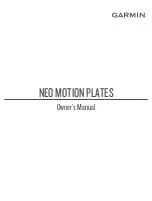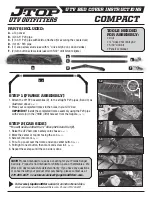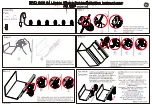
2.1 Air Spring
The first adjustment that should be done on the fork is to set the air pressure. This adjusts the stiffness of the air spring
according to your weight. The stiffness of the air spring induces a degree of fork travel when you sit on your bike. This value,
commonly called sag, can vary based on your usage. This value should be between 15mm (smooth terrain/climbs) and 20mm
(rough terrain/downhills) for the 100mm Dizzy and between 20mm (smooth terrain/climbs) and 25mm (rough
terrain/downhills) for the 120mm Dizzy. The sag measurement should be taken with both feet on the pedals and both hands on
the bars, arms and legs in the pedaling position.
To achieve the best performance from your BOS product, it is important to set your optimal pressure. The chart below will give
you some base values based on your weight. Your specific pressure may vary based on your riding style and personal preference.
However, do not stray too far from the indicated pressures, or you may risk changing the performance of your fork.
Recreational use :
Weight (Kg/lbs)
60/132
65/143
70/154
75/165
80/176
85/187
90/198
Air Pressure (PSI)
+/-‐10 PSI
120
130
140
150
160
170
180
Racing use :
Weight (Kg/lbs)
60/132
65/143
70/154
75/165
80/176
85/187
90/198
Air Pressure (PSI)
+/-‐10 PSI
125
135
145
155
165
175
185
2. Settings
Caution :
Minimum air pressure: 100 PSI
Maximum air pressure: 220 PSI
psi
Air Valve Cap
Air Valve
Important :
Balancing the air chamber pressure:
To ensure optimum operation, it is important to balance the positive and negative chambers every time you adjust the
air pressure.
Proceed as follows:
After adjusting the pressure, cycle the fork slowly 3-‐4 times on the first inch of travel.
Thus, the air pressure is distributed equally between the chambers, and your fork is ready to roll!




























